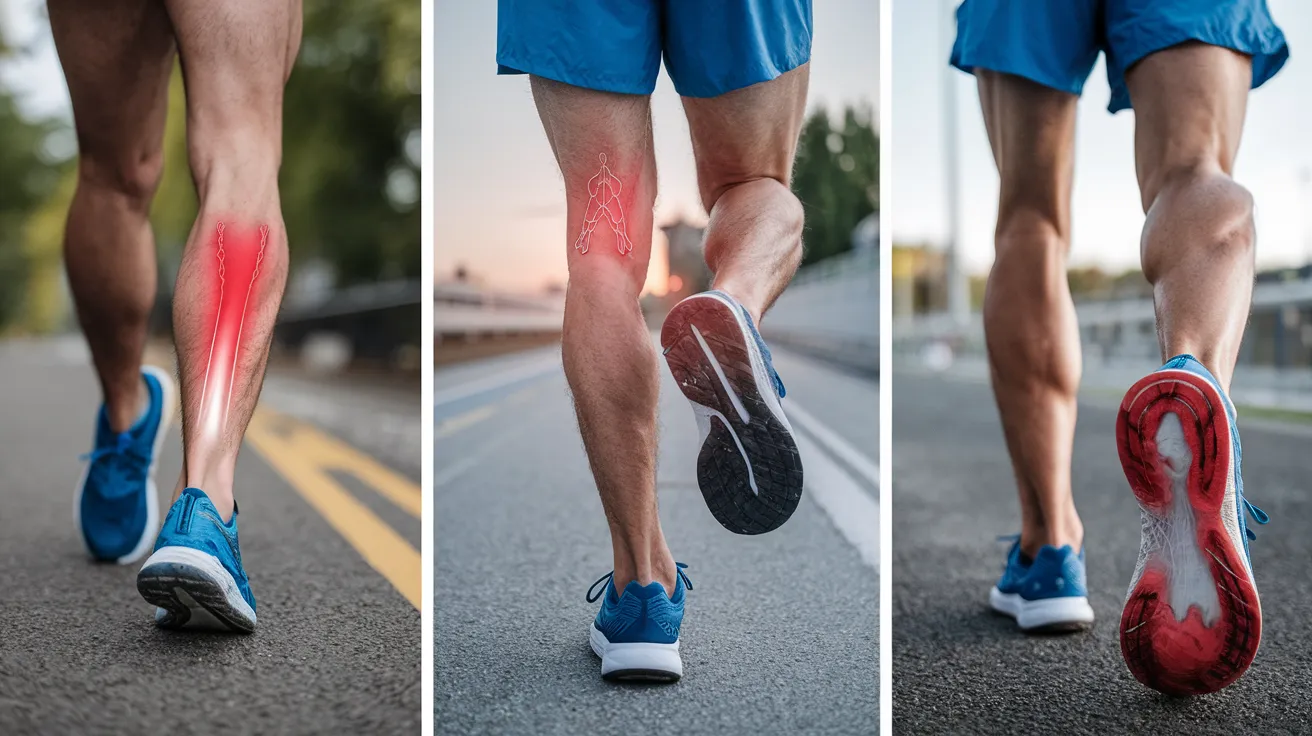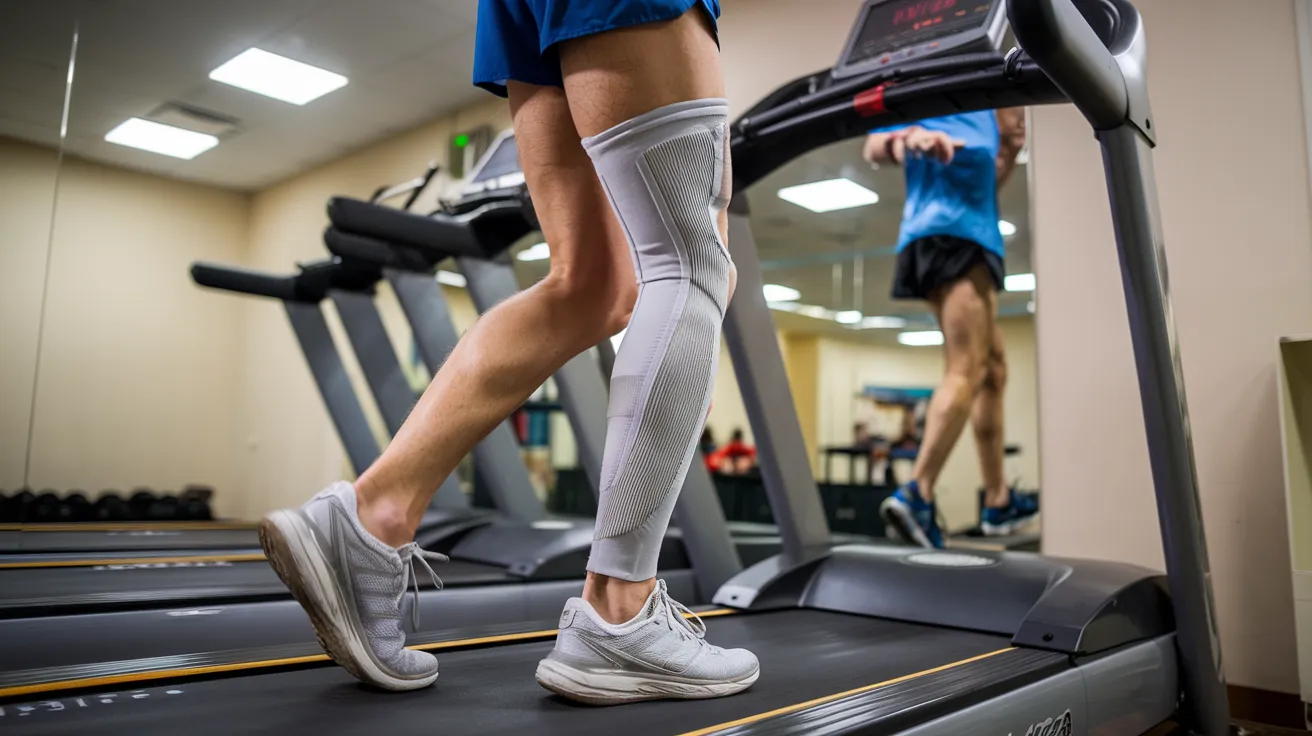
How to Avoid Common Running Injuries: Tips for Staying Injury-Free while Running

5 min read
Running is one of the most popular forms of exercise, and it can be a great way to stay in shape and improve your overall health.
However, like any physical activity, running can also put you at risk for injuries if you don’t take the proper precautions.

In this article, we’ll share some tips on how to avoid common running injuries and stay injury-free while running.
Common Running Injuries

Before we dive into the tips for staying injury-free while running, let’s first take a look at some of the most common running injuries.
Shin Splints
Shin splints are a common overuse injury that affects the shinbone (tibia) and the muscles and tendons surrounding it. Symptoms include pain and tenderness along the inside of the shinbone.
Runner’s Knee
Runner’s knee, also known as patellofemoral pain syndrome, is a common knee injury that affects runners. It is caused by the repetitive motion of running and can cause pain around or behind the kneecap.
IT Band Syndrome
IT band syndrome is a common overuse injury that affects the IT band, a thick band of tissue that runs from the hip to the knee. Symptoms include pain on the outside of the knee.
Plantar Fasciitis
Plantar fasciitis is a common overuse injury that affects the plantar fascia, a band of tissue that runs along the bottom of the foot. Symptoms include pain and stiffness in the heel and arch of the foot.
Achilles Tendonitis
Achilles tendonitis is a common overuse injury that affects the Achilles tendon, a band of tissue that connects the calf muscles to the heel bone. Symptoms include pain and stiffness in the Achilles tendon.
Stress Fractures
Stress fractures are tiny cracks in the bone that can occur as a result of overuse. They most commonly occur in the feet and lower legs and can cause pain and tenderness in the affected area.
Tips for Staying Injury-Free
Now that we’ve looked at some of the most common running injuries, let’s explore some tips for staying injury-free while running.
Warm Up and Cool Down Properly
Warming up and cooling down properly can help to prevent injury by preparing your muscles for exercise and aiding in their recovery afterward. Before you start running, take a few minutes to do some dynamic stretching, such as walking lunges or leg swings. After your run, take a few minutes to do some static stretching, such as calf stretches or quad stretches.
Wear Proper Shoes
Wearing proper shoes is essential for preventing running injuries. Make sure that your shoes fit properly and provide adequate support for your feet. Replace your shoes every 300-500 miles to ensure that they are still providing adequate support.
Increase Mileage Gradually
One of the most common causes of running injuries is increasing your mileage too quickly. To avoid injury, it’s important to increase your mileage gradually. A good rule of thumb is to increase your mileage by no more than 10% each week.
Incorporate Strength Training

Incorporating strength training into your running routine can help to prevent injuries by strengthening the muscles
that support your running form. Focus on exercises that target your core, hips, and legs, such as squats, lunges, and planks.
Listen to Your Body
One of the most important tips for staying injury-free while running is to listen to your body. If you feel pain or discomfort while running, don’t push through it. Take a break and allow your body to rest and recover.
Cross-Train
Cross-training is a great way to prevent running injuries by giving your body a break from the repetitive motion of running. Try incorporating activities such as cycling, swimming, or yoga into your routine.
Pay Attention to Your Running Form
Proper running form can help to prevent injuries by reducing the impact on your joints and muscles. Keep your head up, shoulders relaxed, and arms at a 90-degree angle. Land on the middle of your foot and avoid overstriding.
Get Enough Rest and Recovery
Rest and recovery are essential for preventing running injuries. Make sure that you’re getting enough sleep and allow your body time to recover between runs. Foam rolling and stretching can also help to speed up recovery time.
Stay Hydrated
Staying hydrated is important for preventing running injuries by keeping your muscles and joints lubricated. Make sure that you’re drinking enough water throughout the day and during your runs.
Gradually Increase Your Intensity
In addition to gradually increasing your mileage, it’s important to gradually increase your intensity. Intervals, hills, and speed work can be great for improving your running performance, but they should be added gradually to avoid injury.
Take Rest Days
Rest days are important for preventing running injuries by allowing your body time to recover. Make sure that you’re taking at least one or two rest days per week.
Conclusion
Running can be a great way to stay in shape and improve your overall health, but it’s important to take the proper precautions to avoid injury.
FAQs
- How do I know if I’m wearing the right shoes for running?
You should look for shoes that fit properly and provide adequate support for your feet. Consider visiting a specialty running store to get fitted for the right shoes for your foot type.
- Is it okay to run through pain?
No, it’s not okay to run through pain. If you’re feeling pain or discomfort while running, take a break and allow your body to rest and recover.
- How often should I replace my running shoes?
It’s recommended that you replace your running shoes every 300-500 miles to ensure that they are still providing adequate support.
- Can cross-training help prevent running injuries?
Yes, cross-training can help prevent running injuries by giving your body a break from the repetitive motion of running and strengthening the muscles that support your running form.
- How do I know if I’m increasing my mileage too quickly?
A good rule of thumb is to increase your mileage by no more than 10% each week. If you’re experiencing pain or discomfort, it may be a sign that you’re increasing your mileage too quickly.


